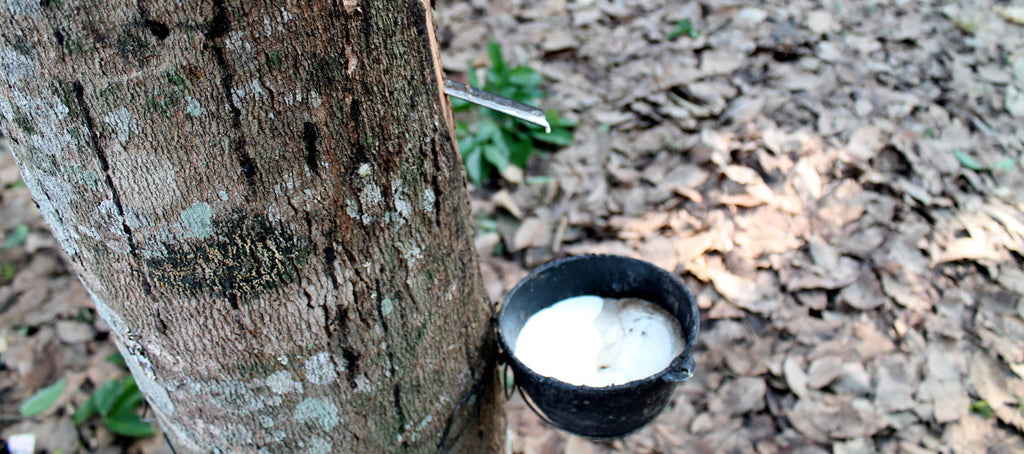So, your old coil-and-polyester monstrosity is toast, and you’ve decided to buy a healthy mattress this time around. Read the labels! Don’t stop at natural. Don’t stop at organic. Those terms can have different legal meanings, ones that don’t necessarily correspond with healthy. For the money—and considering you’ll own this durable bed for 20 years or more—choose the gold standard: an eco-friendly mattress made of certified organic materials.
These sleep surfaces promise healthy, restful nights because of what they do and don’t contain. They’re free of the components in conventional mattresses that pit human health against fire risk, and that minimize quality to maximize corporate profits. When you decide against a regular mattress, you’ll get rid of:
- Volatile gasses in memory foam
- Pesticide residue and chemical treatments in natural-fiber fabrics
- Poor ventilation of polyester fabrics
- Toxic adhesives
- Unsafe chemicals in flame retardants
When you choose an organic mattress, you’ll trade that stuff in for:
- Superior qualities of organic natural latex
- Zero pesticide, fertilizer, or chemical treatments
- Breathable materials that regulate heat and moisture
- Nontoxic manufacturing processes
- Naturally fire-suppressant wool fiber
From design to material sources to the production itself, organic mattresses have the old innerspring and synthetic foam types beat. They’re better for your body, more cost-effective, and every bit as comfy as the old-school mattresses. Here’s how they stack up.
Design
Less is more when it comes to a great mattress—just think of Princess and the Pea. Organic mattresses contain only what you need to enjoy ergonomic support, heat and humidity regulation, and a soft casing nearest your skin. They use high-quality materials that will hold up for decades, as opposed to the average 6-year life span of synthetic mattresses.
Anatomy of an Organic Mattress
Certified Organic Natural Latex Foam Core, Support, and Comfort Layers
Certified Organic Wool Padding
Certified Organic Cotton Covering
Organic Dunlop natural latex is chosen for its resiliency and durability—it won’t sag or degrade for the lifetime of the mattress. Polyurethane foam, on the other hand, breaks down quickly and pollutes indoor air.
Organic wool replaces the synthetic filling of regular mattresses with a pure, natural fiber that resists burning, so no chemical coating is needed.
Organic cotton provides a much healthier surface on which to sleep, compared with the polyester covers of coil mattresses. That fabric is drenched in chemical flame retardants that irritate skin and contaminate air.
Layering latex provides custom support for different types of sleepers. Wool padding and cotton covers add the sort of comfort you’re used to getting from your old mattress—without the health trade-offs.
Sourcing
Natural latex comes from the “milk” of the Hevea rubber tree, which is widely cultivated in Asia and Africa. Mattresses made with quality organic latex receive GOLS certification (Global Organic Latex Standard). This ensures that the latex is 95 percent pure organic rubber that uses a nontoxic process to turn the rubber serum into foam.
The sheep that give us organic wool represent renewable resources that are managed to strict humane and ecological standards. Certifying bodies such as USDA and Oregon Tilth guarantee that sheep are raised on organic pasture, while GOTS certification (Global Organic Textile Standard) confirms that the extracted fiber is produced to healthy criteria.
Both conventionally produced wool and cotton products have high levels of chemical residues. Certified organic wool, though, is guaranteed to be cleaned and processed without any toxins. Organic cotton boasts no pesticides or fertilizers, which is especially important in the fibers woven and stitched into mattress coverings that will lie closest to your skin. Organic cotton grown around the world may also be certified by GOTS.
The best mattress companies thoughtfully select sources, taking into account environmental impacts, worker well-being, and—of course—material quality. When you’re only working with three “ingredients,” starting with superior sources reaps superior finished products.
Crafting
The techniques used to create organic mattresses should mirror the integrity of the materials themselves. For instance, it’s no use raising sheep on organic pastures if the wool is conventionally processed using chemical solvents. In the same vein, the benefits of the low-impact Dunlop procedure are lessened on latex that comes from trees treated with chemicals.
Industry-leading mattress companies obtain as much certification as possible to cover their materials and manufacturing methods. This means that healthy mattresses will test negative for the presence of harmful compounds commonly associated with polyurethane, flameproof coatings, and conventionally grown cotton. Low-tech processes that use heat and compression eliminate the need for chemical adhesives.
The upside for producers is that workshops are healthy environments. After all, human resources may be renewable, but they are not expendable! You can take this as a good sign for you, the sleeper who will also come into contact with mattress materials.
Organic mattresses production should also be eco-friendly, using best practices such as water conservation and low-waste, high-recycling standards. For many consumers, green manufacturing is part of the attraction of organic mattresses. This plays right into what you’re looking for: a place to sleep that is healthy by nature.
